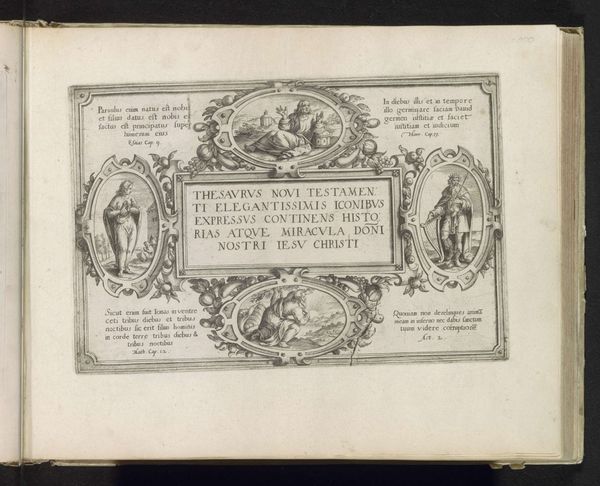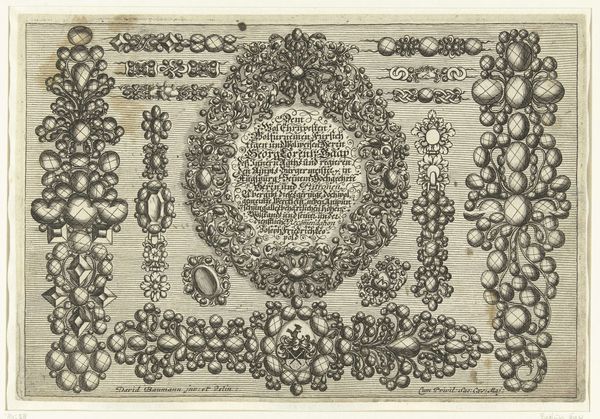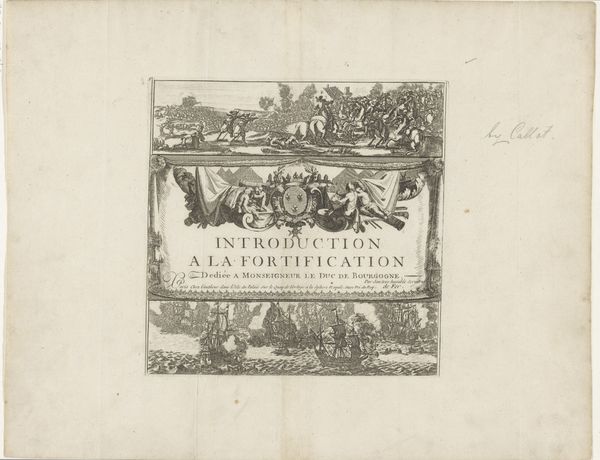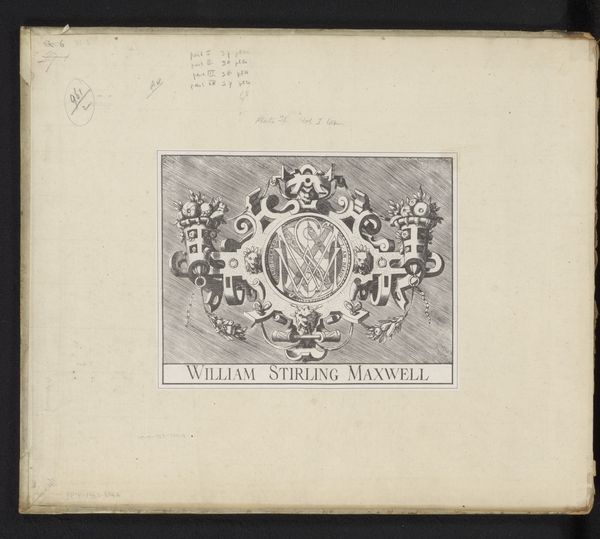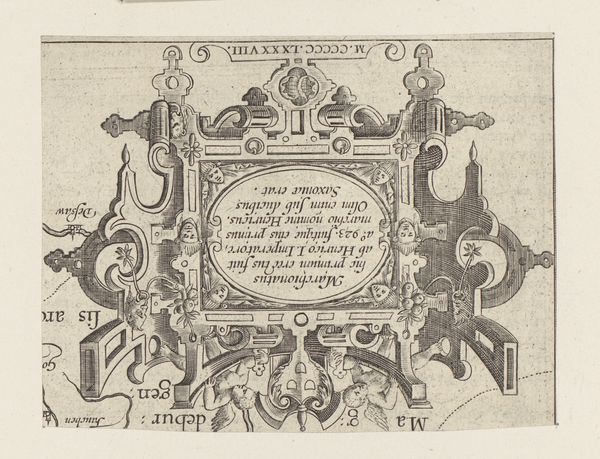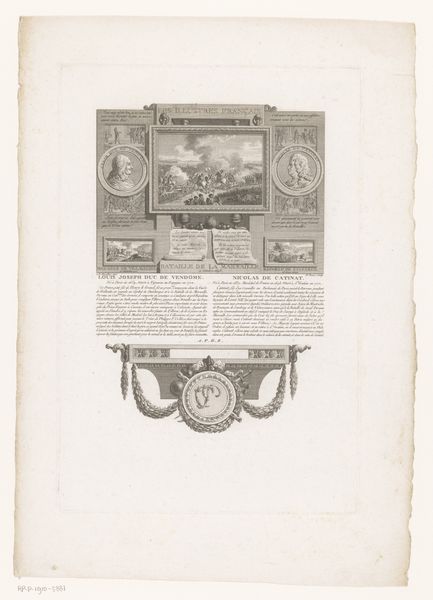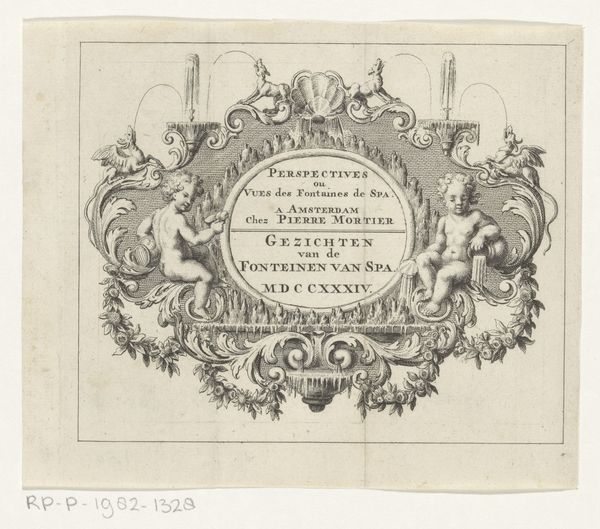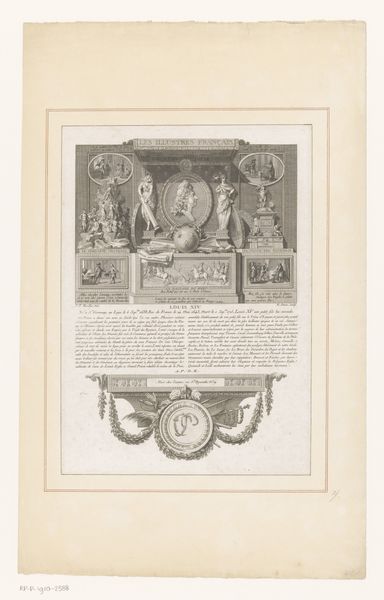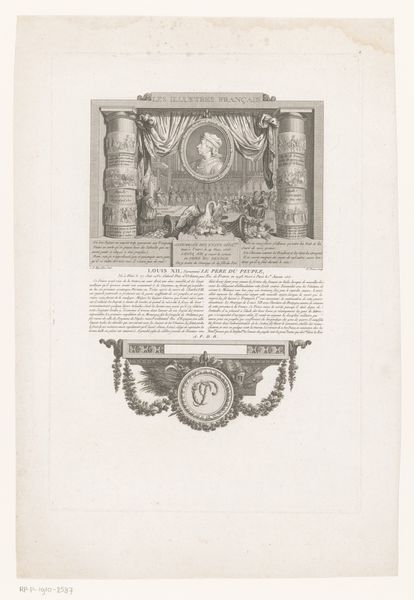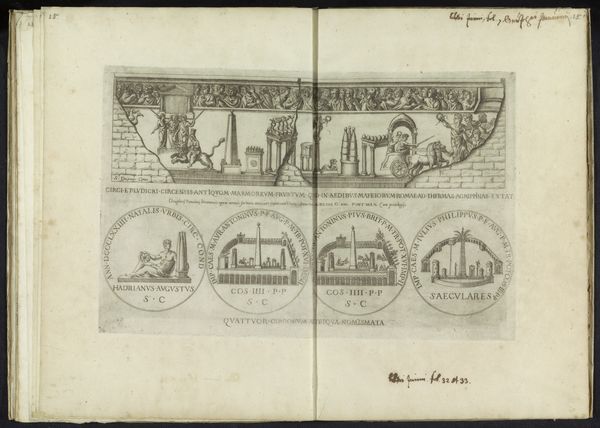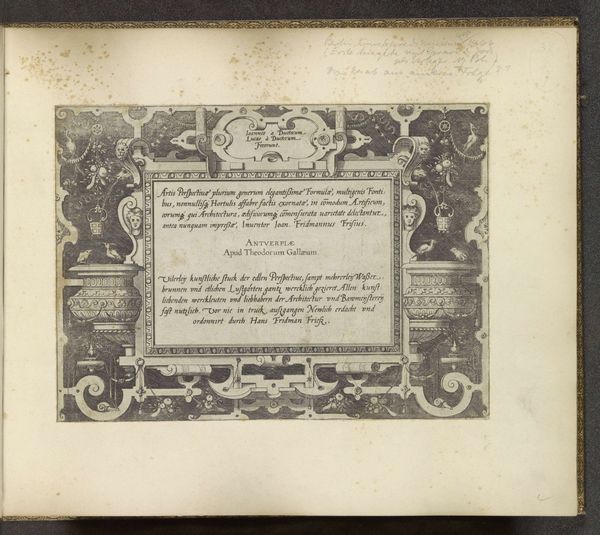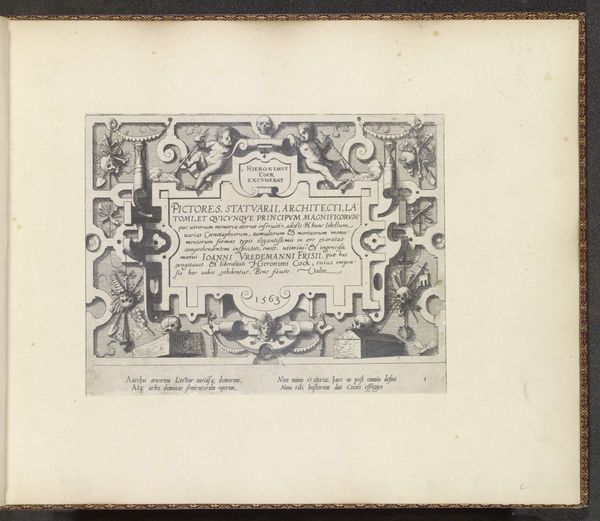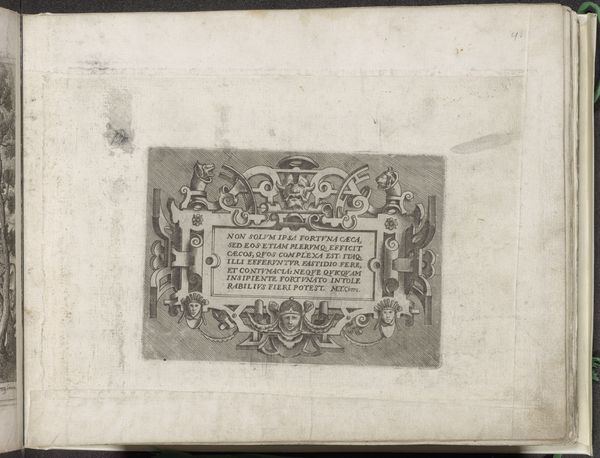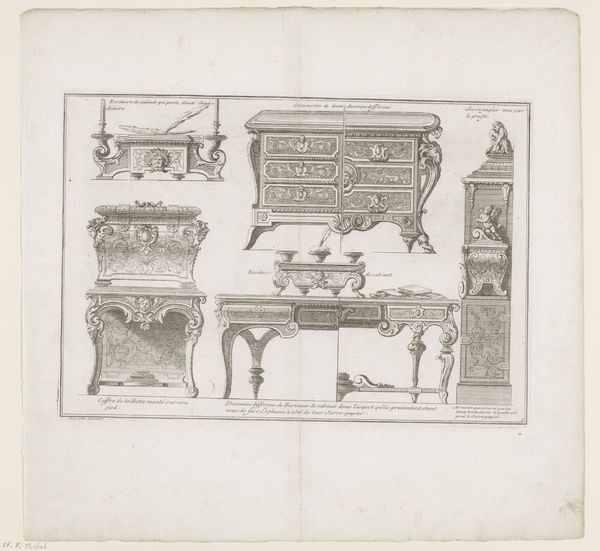
Speculum Romanae Magnificentiae: A Marble Plaque with Military Insignia 1551
0:00
0:00
drawing, graphic-art, print, engraving
#
drawing
#
graphic-art
# print
#
ancient-mediterranean
#
history-painting
#
engraving
Dimensions: sheet: 13 9/16 x 19 1/8 in. (34.5 x 48.5 cm) plate: 9 3/16 x 10 13/16 in. (23.4 x 27.4 cm)
Copyright: Public Domain
Curator: The engraving before us, "Speculum Romanae Magnificentiae: A Marble Plaque with Military Insignia," was created in 1551 by Nicolas Beatrizet. The print is based on an ancient Roman marble plaque and is an example of early printmaking techniques, designed to reproduce and disseminate images of Roman antiquities. Editor: My initial impression is one of meticulous detail, and a certain stiffness in the composition. The lettering and heraldic devices are crammed together. The black and white further adds a formal austerity that’s striking. Curator: Indeed. Beatrizet was a skilled craftsman who utilized the engraving medium to showcase the materiality and craftsmanship of Roman objects for a 16th-century audience. Think of the labour invested in transferring something of this scale from stone into graphic art. Editor: That raises a crucial point about the intended public. The Speculum Romanae Magnificentiae was, essentially, a print series acting as a visual encyclopedia for the elite—intellectuals, artists, and patrons eager to reconnect with their classical heritage, right? It also functioned as a status symbol of cultural and social position. Curator: Precisely. And prints like this were collected and bound, circulated throughout Europe, contributing to the revival of classical forms and motifs. But also think about how it collapses time and distance, rendering the imperial glory of Rome into a mass produced paper artifact. The choice of black and white itself might highlight the engraved object, underscoring the historical gravity. Editor: I wonder how perceptions of power were implicated by such endeavors. While Beatrizet was technically replicating antiquity, in a sense, this became something new, didn't it? Something shaped by contemporary tastes and its function as both document and luxury good. Curator: I see this more about the accessibility of history to certain groups than an innovation of it, but you're right; there is certainly interplay of the classical era and contemporary cultural practices and modes of dissemination within Beatrizet’s work. Editor: Ultimately, this piece, rendered through printmaking, tells as much about the aspirations and preoccupations of Beatrizet's time as it does about ancient Rome. Curator: Absolutely, and it demonstrates the important and tangible ways in which artistic skill contributed to constructing and shaping historical narratives during the Renaissance.
Comments
No comments
Be the first to comment and join the conversation on the ultimate creative platform.
